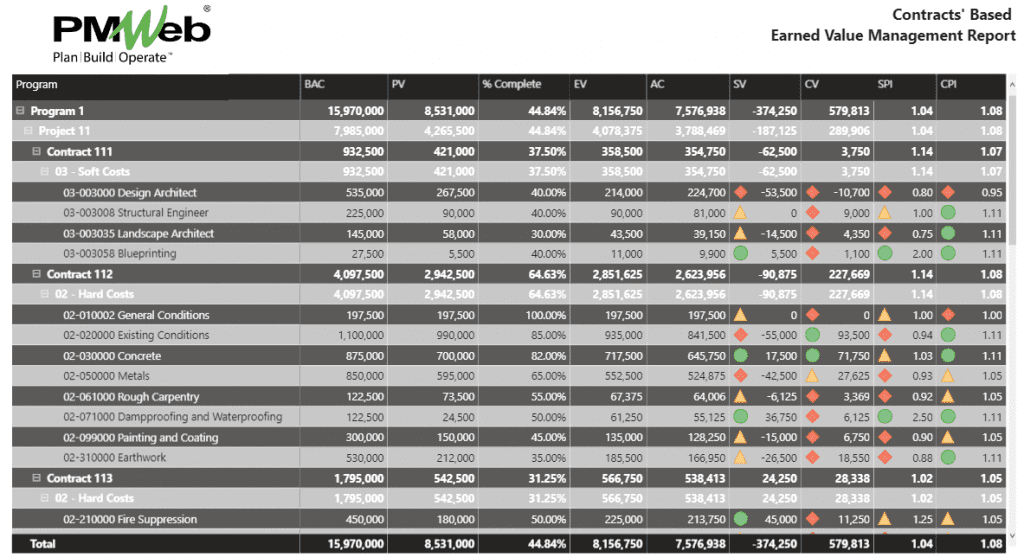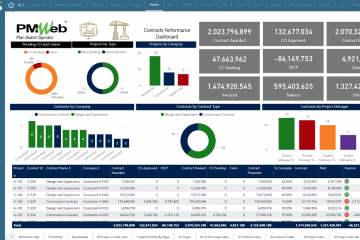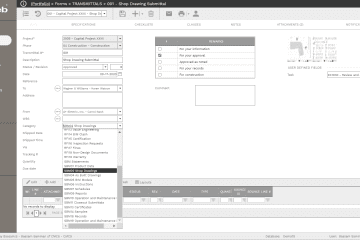When it comes to delivering capital construction projects, it is a very common practice that project owners transfer the risk for delivering the projects by procuring different contracts for delivering the scope of work. Those contracts could be for construction works, site supervision, and even project management services. Using construction project management software is increasingly essential in managing these contracts effectively. For construction works, it is also a growing trend to use bid packages as a project delivery to break down the project’s scope of work into specific contracts that can be awarded to different qualified contractors. This enables the ability to fast-track the project’s design, procurement, and construction phases to reduce the overall project delivery duration. So how does an owner create an earned value management analysis to track these contracts?
For a project owner to have a more meaningful earned value management analysis, the earned value measures need to be applied on each contract level and then consolidated at the project level. This means that the Budget at Completion (BAC) value should be the current contract’s approved value that is equal to the awarded contract value plus all approved change orders to date. The Planned Value (PV) is the planned amount for what the Contractor will invoice at the end of the current period. This is equivalent to the values calculated in the Contractor’s cost-loaded schedule. The Earned Value (EV) is the current period approved percent complete as per the updated schedule multiplied by the contract’s approved value as explained above. The Actual Cost (AC) is the total of interim progress invoices approved to date. Those values are then used in the EVM metrics for Schedule Variance (SV), Cost Variance (CV), Schedule Performance Index (SPI), and Cost Performance Index (CPI).
Using a Project Management Information System (PMIS) like PMWeb, organizations can capture the details of all projects and contracts within each project. PMWeb commitment module will be used to capture the details of awarded contracts, lump sum and unit price contracts, for construction, supply, supervision, project management consulting, and other professional services. The contract value will be the baseline Budget At Completion (BAC) value for the earned value management analysis and reporting.
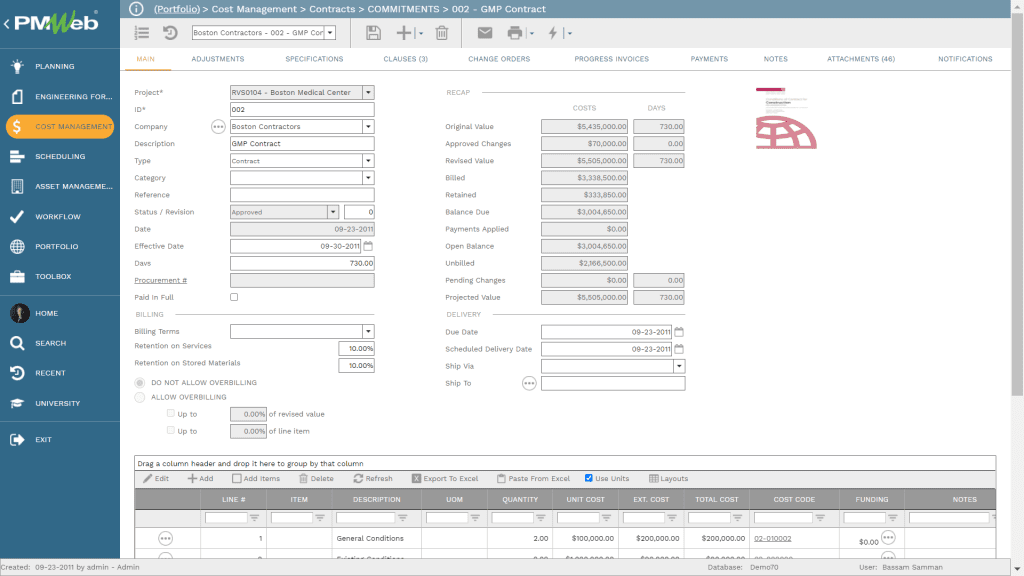
The details of each contract need to be aligned with the cost-loaded schedule of the relevant contract agreement. The level of detail uses the same cost breakdown structure (CBS) levels used in the cost-loaded schedule. The calculated cost-loaded value for each period in the project schedule becomes the basis for providing the planned invoice or cost value for each line item in each contract. Using construction project management software ensures that those values should be aligned with the progress-earning rules for each contract and items within a contract. Those are the values that become the basis for calculating the Planned Value (PV) value for each progress period.

PMWeb change order module is used to adjust the baseline contract value when needed. PMWeb change order module will capture all approved, pending, and disputed change orders. In addition, there is an option to associate the PMWeb change order module with the PMWeb potential change order module. The potential change order module is used to capture all early warning notifications, claim notices, and other change documents that could lead to a change order if they have merit and are approved.
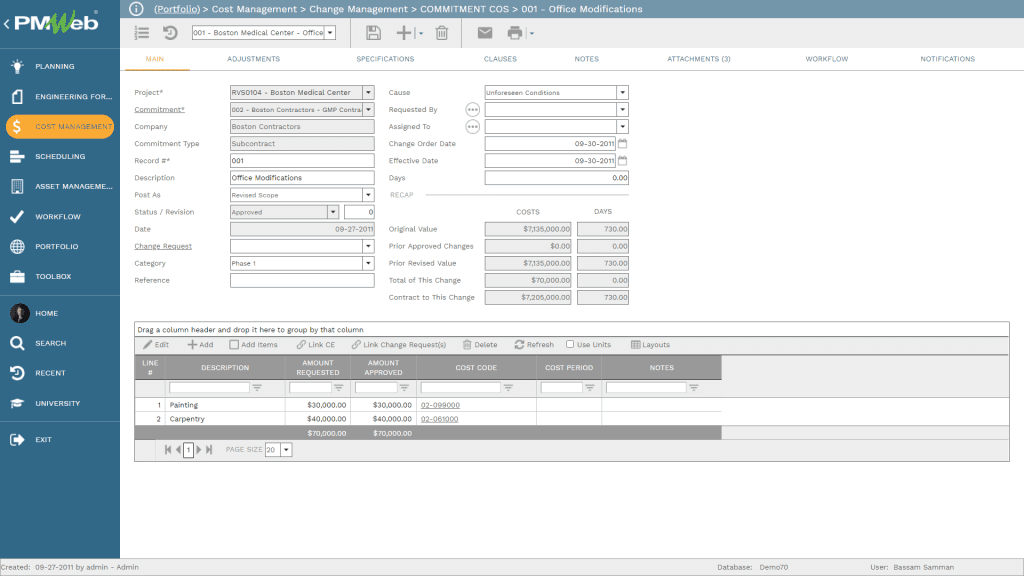
The interim payment certificate (IPC) valuation is captured using the PMWeb progress invoice module. The interim payment certificate (IPC) is used to calculate the Earned Value (EV) and Actual Cost (AC) measures for each contract line item. Each line item in the progress invoice is linked with the relevant project schedule activity which becomes the basis for importing the percent complete (%) for the activity as per the linked updated schedule for the same progress period. The percent complete (%) value is used to calculate the Earned Value (EV) for the period by multiplying the percent complete value with the Budget At Completion (BAC) value for the relevant item in the contract agreement.
The last needed measure for earned value management (EVM) metrics is the Actual Cost (AC) value for the work in place for the current period. The details of which are captured using the same PMWeb progress invoice module. PMWeb keeps track of the calculated Earned Value (EV) and Actual Cost (AC) for each progress period to enable the production of the earned value management (EVM) metrics trend reports.
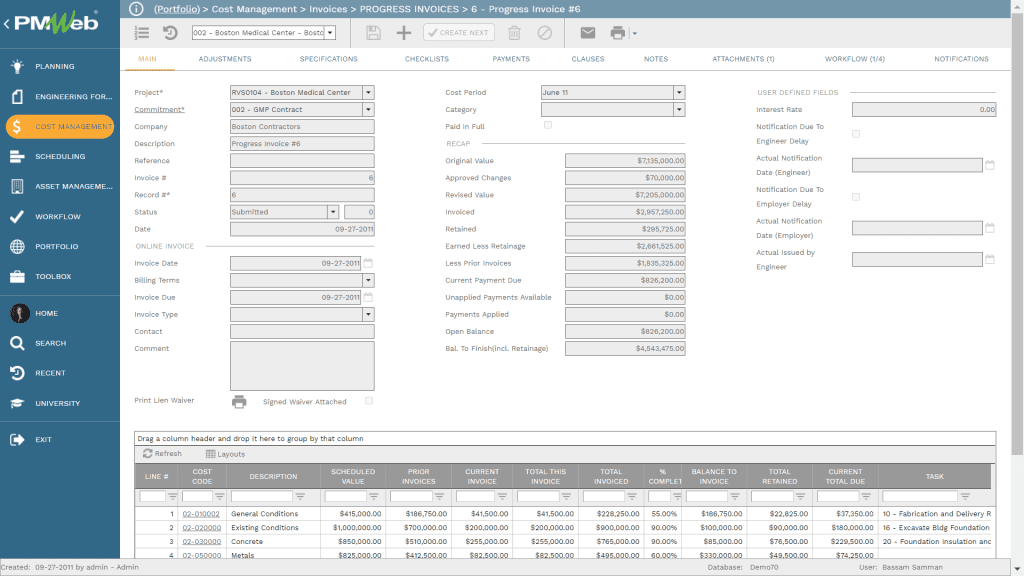
Similar to all other PMWeb project management processes, the approved baseline contract, potential change orders, change orders, and progress invoices can be attached with all supportive documents that are usually uploaded and stored in the PMWeb document management repository. In addition, links to relevant PMWeb records and imported MS Outlook emails can be added to each process transaction.
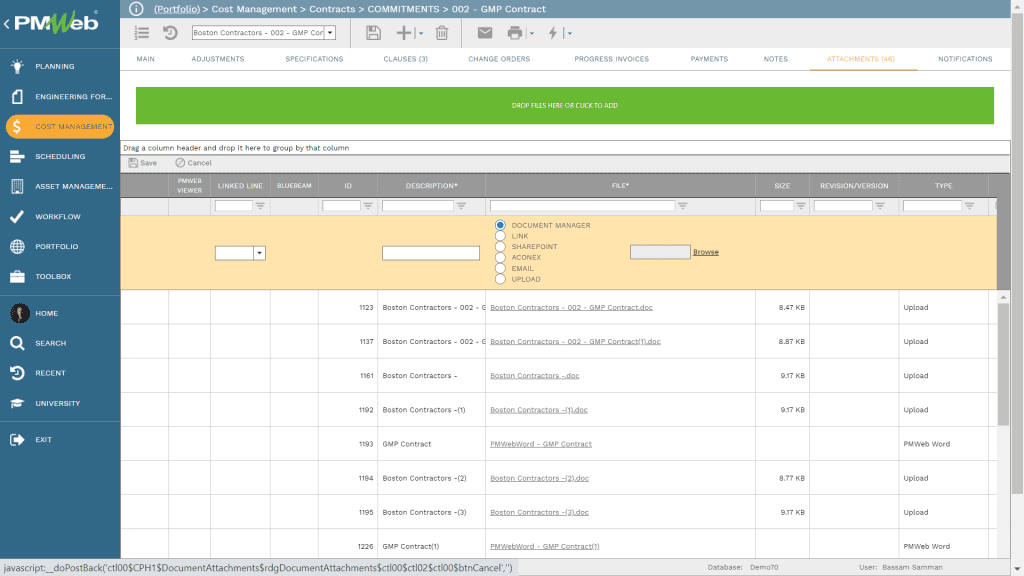
In addition, each process can be associated with a workflow to formalize the submit, review, and approve process. The workflow is used to map the workflow tasks, their sequence, duration, responsibility, conditions for resubmitting, and possible actions among others. The workflow could also have conditions to map the approval authority levels usually associated with financial transactions.
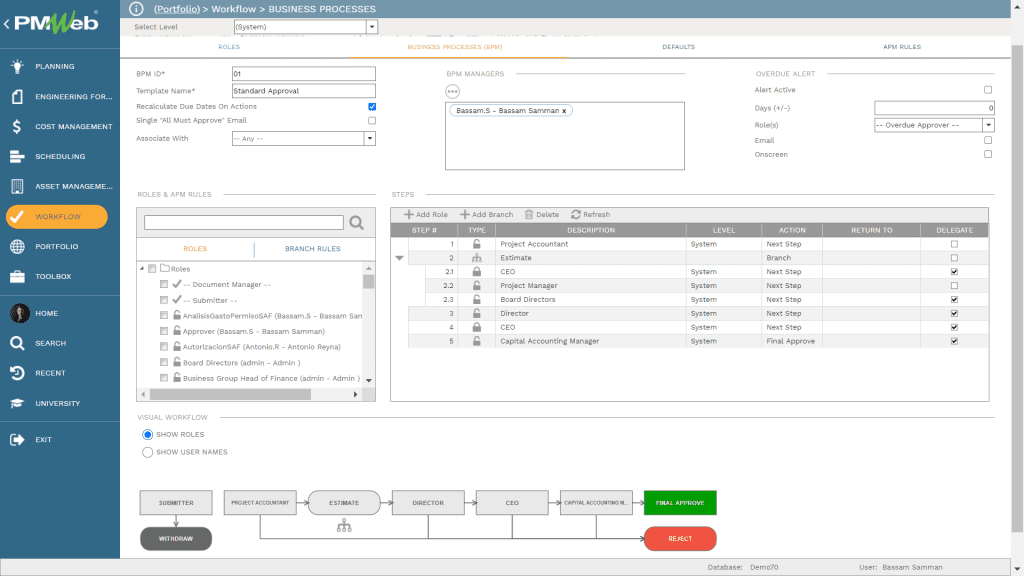
Of course, the earned value management (EVM) measures and metrics for each contract at the end of each progress period can be consolidated to produce the project EVM report. This provides the project owner with a better and more reliable monitoring and evaluation of their projects’ portfolio performance. Using construction project management software, the reporting can be done at enterprise, program, project, and contract levels as well as at the cost breakdown structure (CBS) level for each contract.
Although the calculated Schedule Variance (SV) and Schedule Performance Index (SPI) provide an indication of whether a contract, project, or program is ahead or behind the planned schedule, never the less, the Cost Variance (CV) and Cost Performance Index (CPI) are not an indication if the project is under or over cost but rather whether the Contractor, Supplier or Consultant actual funds earned are more or less of the value earned as per the approved project schedule percent complete. For a Project Owner, this is an important indicator to show if what cost percent complete is less than the physical percent complete or not.
